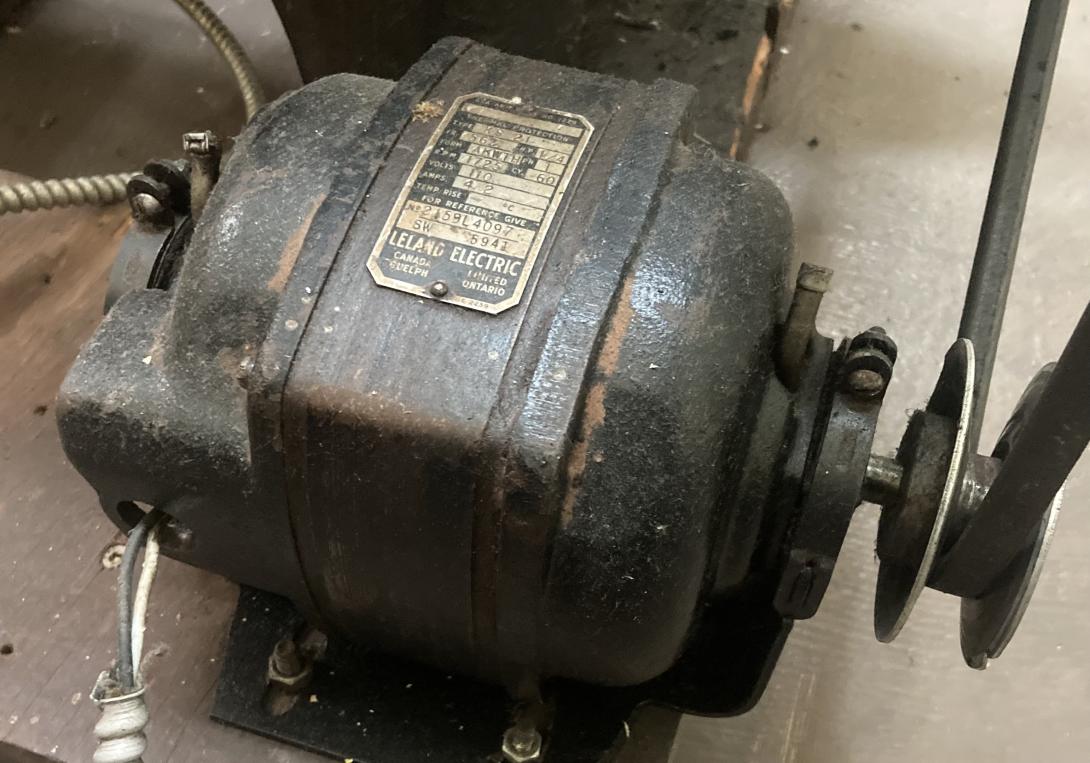My Golding Jobber № 8 letterpress came to me modified by it’s previous owners, Bill and Gertie Campbell, so that a small motor drives its flywheel. In the original, the press would have been driven by a belt, or by a foot treadle; the update to an electric motor is a boon to productivity and ease of use.
Here’s what the motor looks like:

I have something of a symbiotic relationship with the motor: it turns at 1725 RPM (you can see this on the nameplate on top of the motor), and that causes the press, via the drive belt connected to the flywheel (via a bicycle wheel riveted to it) to move at a constant rate. Over the almost 15 years I’ve been running the press, the cadence of the press has been matched by the cadence of my dance with it. It’s the closest to a person-machine relationship as I’ve ever had.
To spring the press to life has always involved flipping on a light switch on the front of the press, to turn on the motor, and then giving the flywheel a nudge forward; from that point things are on their own, and the press does its half of the dance. This fall, though, this step started to falter, and the flywheel started to need a full-fledge heave-on to start rotating.
After lubricating and greasing all the parts of the press that might be at fault, I rationed that fault might lie with the motor, and that it might need a a tune-up, and so I took it out to Chandler Motor Repair, near the airport.
The motor turned out to be an object of interest, made back in the day when motors were motors. “If you were to buy a motor like this today, it would cost you $1000,” they said.
Some facts about the motor:
- It was made by the Leland Electric company of Guelph, Ontario.
- It’s a 1/4 horsepower motor, making it a fractional horsepower motor as regards regulations.
- It’s a 4.2 amp motor, which Chandlers found interesting: apparently a contemporary motor would be about half that.
Chandlers are getting back to me later in the week with an estimate for what it will take to make the motor like new again.
 I am
I am
Add new comment